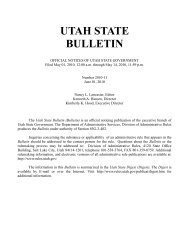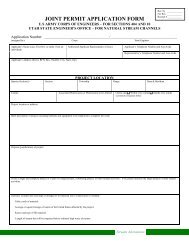Vol. 2007, No. 15 (08/01/2007) PDF - Administrative Rules - Utah.gov
Vol. 2007, No. 15 (08/01/2007) PDF - Administrative Rules - Utah.gov
Vol. 2007, No. 15 (08/01/2007) PDF - Administrative Rules - Utah.gov
Create successful ePaper yourself
Turn your PDF publications into a flip-book with our unique Google optimized e-Paper software.
DAR File <strong>No</strong>. 3<strong>01</strong>80<br />
NOTICES OF PROPOSED RULES<br />
smoke detector, and one fully charged fire extinguisher on each level<br />
of each building.<br />
(4) A program shall place all hazardous chemicals and<br />
materials, including but not limited to poisonous substances,<br />
explosive or flammable substances, and cleaning supplies, in locked<br />
storage when not in active use.<br />
(a) Hazardous chemicals and materials shall be stored in:<br />
(i) the manufacturer's original packaging together with the<br />
manufacturer's directions and warnings; or<br />
(ii) a container that complies with the manufacturer's directions<br />
and warnings and is clearly labeled with the contents, manufacturer's<br />
directions and warnings.<br />
(b) Flammable substances, including but not limited to<br />
gasoline, kerosene, and propane, shall be locked in a ventilated<br />
storage area or OSHA approved storage cabinet separate from office<br />
and living areas.<br />
(c) Except as provided by Subsections R5<strong>01</strong>-2-<strong>15</strong>(4)(c)(i)<br />
through (iii), a client shall have no access to any hazardous<br />
chemicals or materials, including but not limited to poisonous<br />
substances, explosive or flammable substances, and cleaning<br />
supplies, unless the client is directly supervised by staff.<br />
(i) A program may assess a client and provide unsupervised<br />
access to a hazardous chemical or material only after the client<br />
demonstrates the ability to use the hazardous chemical or material<br />
safely.<br />
(ii) A client's individual assessment shall provide a detailed<br />
description of the assessment and shall be signed and dated by the<br />
direct care staff performing the assessment.<br />
(iii) A client's assessment shall be filed in the client's<br />
individual file.<br />
(5) A program that permits any person to smoke or use tobacco<br />
products shall:<br />
(a) have and comply with a smoking and tobacco products<br />
policy;<br />
(b) prohibit smoking and the use of tobacco products by or in<br />
the presence of a child;<br />
(c) prohibit smoking and the use of tobacco products in any<br />
enclosed area; and<br />
(d) comply with the <strong>Utah</strong> Clean Air Act.<br />
(6) A program that provides food for its clients shall comply<br />
with Rule 70-530 Food Protection.<br />
(7) A program that provides food for its clients shall not serve<br />
and shall promptly dispose of food:<br />
(a) after the expiration date on the food package;<br />
(b) after the "best used by" date on the food package;<br />
(c) two weeks after the "sell by" date on the food package;<br />
(d) infested with insects or vermin;<br />
(e) that looks or smells spoiled or moldy; or<br />
(f) in a can that has any damage to its seams, has rust, or is<br />
bulging.<br />
(8) A program shall have policies and procedures that describe<br />
which animals are permitted or restricted on-site.<br />
(a) Animals that are owned, sheltered or fed by the program, or<br />
whose freedom to leave the program site is restricted, shall be free<br />
from disease and cared for in a clean, safe, and humane manner.<br />
(b) A program shall maintain a file documenting the health of<br />
each animal on site. The file shall include written verification of<br />
each animal's current vaccinations in accordance with the law and<br />
veterinary recommendations, health care, health history, and any<br />
incidents involving aggression by the animal.<br />
(c) A program shall provide and document staff training and<br />
client training regarding the risks, proper feeding, cleaning shelter<br />
and handling of each individual animal prior to permitting any<br />
contact with that animal.<br />
(d) A program shall immediately isolate an animal that bites or<br />
attacks any person and causes an injury, and shall report an incident<br />
to local animal control authorities within 24 hours.<br />
R5<strong>01</strong>-2-16. Weapons.<br />
(1) Dangerous weapons shall be inaccessible to clients, except<br />
as specifically authorized in the program's written policy and<br />
procedures manual.<br />
(a) The program shall take into consideration common<br />
household items that may be used as a weapon.<br />
(b) A program's manual shall describe which weapons are<br />
permitted and which are prohibited on site, and shall also describe<br />
how weapons shall be stored, and the circumstances under which<br />
they may be accessible to clients.<br />
(i) The determination of permitted and prohibited weapons<br />
shall be made in accordance with the age and behavioral<br />
characteristics of the client population served.<br />
R5<strong>01</strong>-2-17. Transportation.<br />
The program shall have a written policy and procedures<br />
regarding transporting clients, which shall include:<br />
(a) each occupant of any vehicle transporting a client shall<br />
have and use a properly functioning seat belt;<br />
(b) a client shall not be transported in the bed of any vehicle;<br />
and<br />
(c) a client shall not be permitted to transport another client<br />
unless the client who is driving is the parent or spouse of the client<br />
being transported.<br />
(2) An adult client in an adult treatment program may transport<br />
another adult client in the program if:<br />
(a) the program has and complies with a written policy and<br />
procedures that address safety factors, including but not limited to its<br />
clients' presenting problems, risk to other clients, staff and the<br />
community, age, maturity, and behavior;<br />
(b) the client driver first submits a current driver license and<br />
annual Department of Public Safety driving record to the program,<br />
to be retained in the client file, which indicate the client's license is<br />
currently valid; and<br />
(c) the passenger voluntarily consents in writing to being<br />
transported by a client driver.<br />
(3) A program's minimum staff to client ratios, as described in<br />
that program's categorical rules, shall be maintained while<br />
transporting clients;<br />
(a) staff who are off-site providing transportation services shall<br />
not be counted when determining program compliance with on-site<br />
staff to client ratios; and<br />
(b) staff shall not transport any client on a motorcycle or farm<br />
machinery, as those terms are defined in Title 53.<br />
(4)(a) The program shall maintain on-site a copy of the current<br />
registration and insurance verification records for each vehicle,<br />
including a privately owned vehicle, it uses to transport a client.<br />
(b) Insurance records for a privately owned vehicle used to<br />
transport a client shall document that the policy includes coverage<br />
for transportation of clients.<br />
(5) A vehicle used to transport a client shall be maintained in a<br />
safe condition.<br />
UTAH STATE BULLETIN, August 1, <strong>2007</strong>, <strong>Vol</strong>. <strong>2007</strong>, <strong>No</strong>. <strong>15</strong> 41


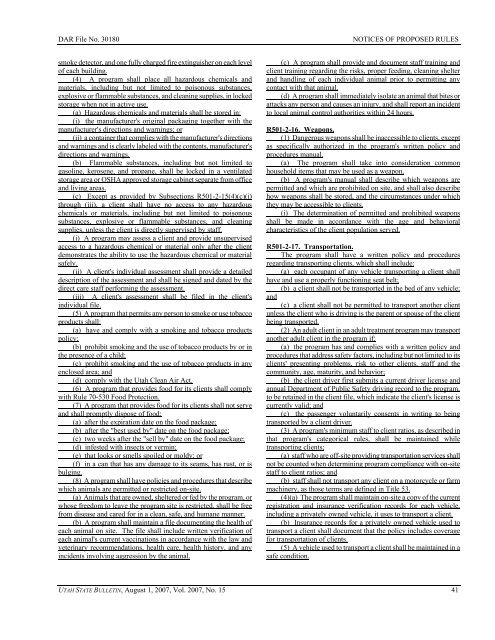
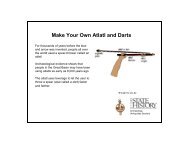
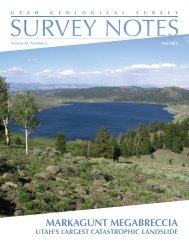
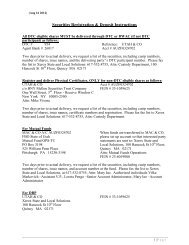
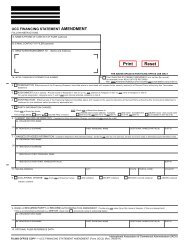
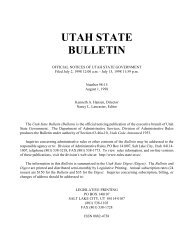
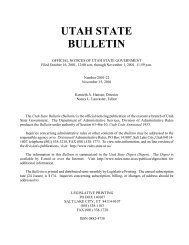

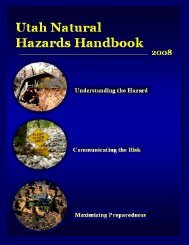

![Lynx avoidance [PDF] - Wisconsin Department of Natural Resources](https://img.yumpu.com/41279089/1/159x260/lynx-avoidance-pdf-wisconsin-department-of-natural-resources.jpg?quality=85)
